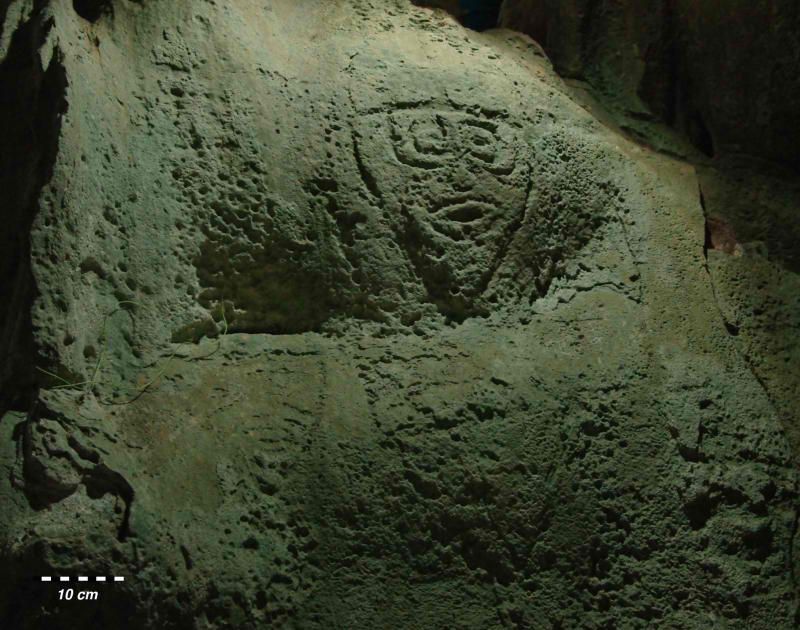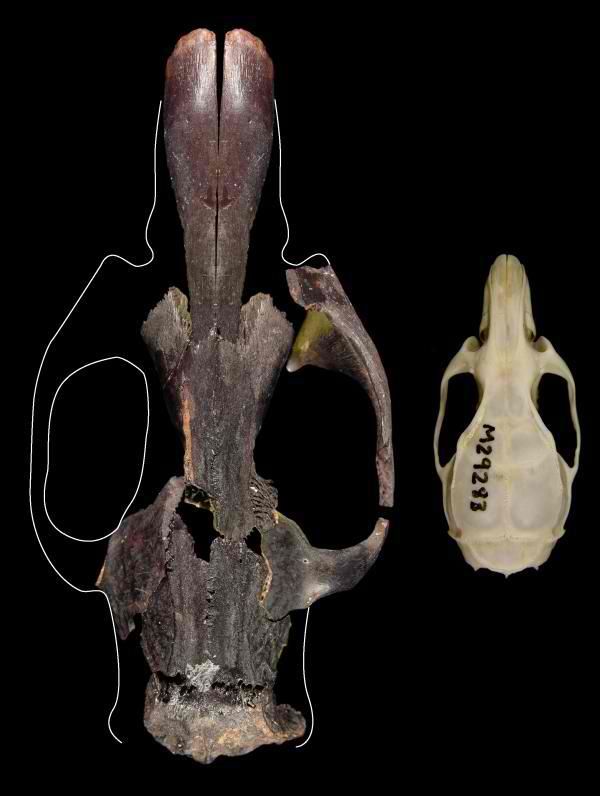|
The Artifacts |
|
|
to Ancient Face Carvings
Quest for
Extinct Giant Rats Leads Scientists to Ancient
Face Carvings Ancient stone faces carved into the walls of a well-known limestone cave in East Timor have been discovered by a team searching for fossils of extinct giant rats. The team of archaeologists and palaeontologists were working in Lene Hara Cave on the northeast tip of East Timor. "Looking up from the cave floor at a colleague sitting on a ledge, my head torch shone on what seemed to be a weathered carving," CSIRO's Dr Ken Aplin said. "I shone the torch around and saw a whole panel of engraved prehistoric human faces on the wall of the cave. "The local landowners with whom we were working were stunned by the findings. They said the faces had chosen that day to reveal themselves because they were pleased by the field work we were doing." The Lene Hara carvings, or petroglyphs, are frontal, stylised faces each with eyes, a nose and a mouth. One has a circular headdress with rays that frame the face. Uranium isotope dating by colleagues at the University of Queensland revealed the 'sun ray' face to be around 10,000 to 12,000 years old, placing it in the late Pleistocene. The other faces could not be dated but are likely to be equally ancient. Lene Hara cave has been visited by archaeologists and rock art specialists since the early 1960s to study its rock paintings, which include hand stencils, boats, animals, human figures and linear decorative motifs. The age of the pigment art in Lene Hara is currently unknown but a fragment of limestone with traces of embedded red ochre was dated previously by Professor Sue O'Connor of The Australian National University to over 30,000 years ago. Although stylised engravings of faces occur throughout Melanesia, Australia and the Pacific, the Lene Hara petroglyphs are the only examples that have been dated to the Pleistocene. No other petroglyphs of faces are known to exist anywhere on the island of Timor. "Recording and dating the rock art of Timor should be a priority for future research, because of its cultural significance and value in understanding the development of art in our past," Professor O'Connor said. Source: Science Daily Related Links:
|
|
The skull of a
black rat (right) compared with a fairly complete
skull of one of Timor's other extinct giant rats
(left). The giant rat shown here isn't the biggest
of the extinct rats, which was around 25 per cent
bigger again. The black rat (Rattus rattus) is one
of the world's most common rat species. It is also
known as the house, roof or ship rat and is found
throughout Africa, Asia, Australia, Europe and the
Americas. A typical adult weighs about 150 grams.
The skull of the black rat shown here is 35 mm
long. (Credit: Ken Aplin, CSIRO)
|
|
| FAIR USE NOTICE: This page contains copyrighted material the use of which has not been specifically authorized by the copyright owner. Pegasus Research Consortium distributes this material without profit to those who have expressed a prior interest in receiving the included information for research and educational purposes. We believe this constitutes a fair use of any such copyrighted material as provided for in 17 U.S.C § 107. If you wish to use copyrighted material from this site for purposes of your own that go beyond fair use, you must obtain permission from the copyright owner. | |
|
|


